Gray Hoverman UHF antenna
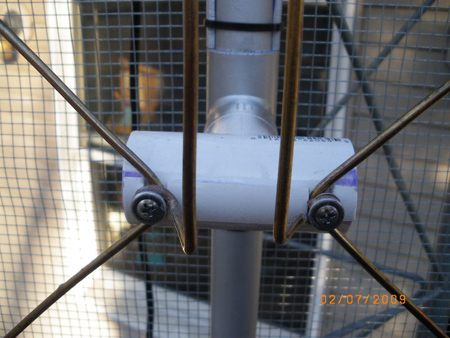
With the impending digital switchover, many of you will find yourselves not only in need of a new converter box, but an antenna as well. Just like everything else, there are plans out there on how to build your own. [William] has gone through the effort of documenting his design and build of a very nicely made version. He used PVC for the frame and a wire mesh or chicken wire reflector. Good job [William]

Plexi cliffhanger for trackmate
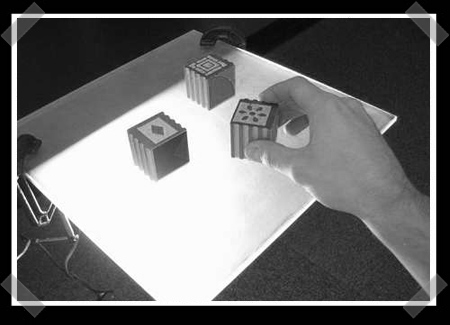
If you’ve ever wanted to play with tangible tracking systems quick and cheap, you might be interested in this super quick tracking surface for trackmate. Trackmate is open source software for physical object tracking. Making a surface for it isn’t that hard in the first place but this one is probably the easiest. All you really need is some Plexiglas, some c-clamps and a web cam. The whole thing packs into a backpack or over the shoulder bag. This would be perfect for live performances.

Desulfator in an altoids tin
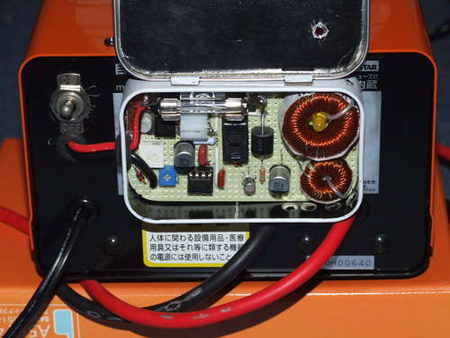
If you’ve ever let a car sit for a period of time and returned to find that the battery was mysteriously “dead”, you were probably experiencing a sulfate crystal build up. Often, people just buy a new battery and plop it in, but that isn’t absolutely necessary. [Kmpres] takes us through the process of building a desulfator. A desulfator works by putting high voltage pulses into the battery forcing the sulfate crystals to dissolve back into the electrolyte. From what [Kmpres] says, you can find “bad” batteries in all kinds of places, use the desulfator on them and have perfectly fine batteries when you’re done. You may recall doing something similar with a disposable camera.

IR controlled light dimmer
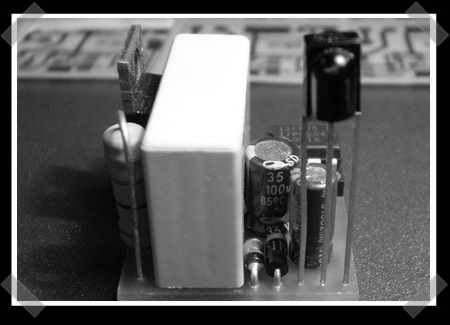
This is a pretty useful device. It is an IR controlled light dimmer. It goes in line with the main power and controls how much gets through to your light. You can adjust the brightness with a TV remote control. Finally, we can retire our clapper! These are commercially available, but making your own is just so much more fun. You may have to dig a little on their site for the schematics and programming. There are tons of other projects there as well so have fun. You can see a video of it in action after the break.
[Thanks T]

OpenVulture, software for unmanned vehicles
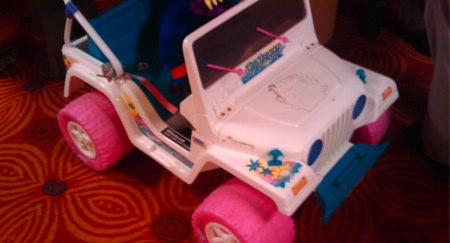
The first talk of ShmooCon was [Ethan O'Toole] and [Matt Davis] presenting their OpenVulture software for unmanned vehicles. In the initial stages, they had just planned on building software for Unmanned Aerial Vehicles, but realized that with the proper planning it could be used with any vehicle: airplanes, cars, boats, and subs (or more specifically, their Barbie PowerWheels). The software is in two parts. First is a library that lets you communicate with each of the vehicle’s modules. The second half is the actual navigation software.
They’ve spent a lot of time sourcing hardware modules. They are looking for items that work well, aren’t too expensive, and have a fairly plug and play implementation. For their main processor, they wanted something that wasn’t a microcontroller and could run a full Linux system. The ARM based NSLU2 NAS seems to be the current frontrunner. You can find the opensource software and descriptions of the supported modules on their site.
They’re building the first test UAVs now. One has a 12 foot wingspan for greater lift and stability. We’ve covered the Arduino based Ardupilot and other UAVs in the past.

Fiber optic flash ring

For those who enjoy photography, a ring light is a nice tool to have. Being hackers, making your own seems only logical. This writeup will take you through the process of making one from fiber optics for super cheap. They basically gutted some fiber optic toys and strapped them to the lens. Sure there was a little more work involved, but that’s the gist of it. You may recall some more in depth fiber optic ring lights using LEDs or cold cathodes that we covered before.
[via Hacked Gadgets]

Augmented FPS gaming

[MikeFez] sent in this info about his augmented FPS set ups. He started this project back with an original XBox in 2006. He wanted a more immersive way of interacting with his games. Pointing out that gaming visuals and interactivity have come leaps and bounds while the controllers themselves have basically just added a few buttons, he explains his goals. He wanted to have to move his body to move his character and possibly physically aim. The original project, for the XBox, was successful in that he used a floor pad to control his character. Since then, the Wii has come out and he has moved to the PC as his main platform. As expected, he is now using the Wiimote as the aiming device.

The 2009 ShmooBall gun

The registration desk hasn’t opened yet at ShmooCon 2009, but we’re already running into old friends. We found [Larry Pesce] and [Paul Asadoorian] from the PaulDotCom Security Weekly podcast showing off their latest ShmooBall gun. ShmooBalls have been a staple of ShmooCon from the very beginning. They’re soft foam balls distributed to each of the attendees who can then use them to pelt the speakers when they disagree. It’s a semi-anonymous way of expressing your dismay physically. [Larry] has been building bigger and better ways to shoot the ShmooBalls for the last couple years. You may remember seeing the 2008 model. This year the goal was to make the gun part much lighter. The CO2 supply is mounted remotely with a solenoid valve and coiled air line. The pistol grip has a light up arming switch and trigger. The gun is fairly easy to transport: the air line has a quick disconnect and the power is connected using ethernet jacks.

TinkerKit, physical computing toolkit
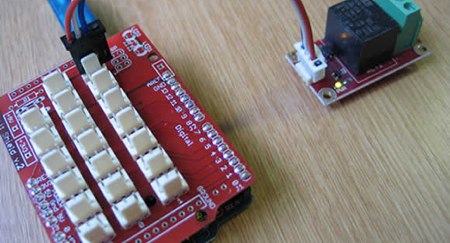
TinkerKit is a collection of 20 different sensors and 10 actuators. It’s meant to make prototyping of physical computing devices much quicker/easier. The devices plug into a Sensor Hub Arduino shield. There is also a similar hub board that can emulate a keyboard; it translates sensor input directly to key strokes. It looks like a very ambitious project and it’s still in development. We love the idea though and think the wide variety of components will foster better final designs. The TinkerKit site covers the current component lineup and there’s a demo video embedded below.

Parking violation leads to malware download

It seems some enterprising individual in Grand Forks, North Dakota has been placing fake parking violations on cars. If the recipient visited the URL on the flyer, they would be told to install a toolbar to view pictures of their vehicle. That piece of malicious software would then attempt to install several more. The actual vehicle pictures were from Grand Forks, but we wouldn’t be surprised to see a similar attack happen in a much larger city.

SparkFun releases RGB button controller

SparkFun has been selling button pad parts for some time and we used them in our RGB door lock project. A excellent part, but you needed to implement your own interface to use the boards. SparkFun has just released two additional versions to make it easier on builders. The first is their Button Pad Controller USB. It has a 4×4 grid of buttons lit by RGB LEDs and a USB interface. This board can be expanded using the Button Pad Controller SPI. The SPI bus means it should be easy to add the button pad to embedded projects. This newest release puts you much closer to building your own RGB monome clone or other custom controller than ever before. The unit pictured above is their own project and they have no plans on selling anything like it.

Radio controlled sphere
[prabbit22m] has written an instructable on how to build a radio controlled sphere. The mechanism is fairly simple, with one drive motor, one servo and a gyro for stability. To turn, the servo shifts the center of gravity off to one side. You can see that the system works pretty well in the video above. If it didn’t have that gyro, it would be insane, believe us, we’ve done our own experimenting. If you like this, but want more features, check out this one that has a camera and takes pictures wherever it goes. We can’t forget Swarm either. The autonomous swarm of robot spheres. Of coarse [prabbit22m] might have the best idea of all. Dress it up as a regular ball to mess with people.

Haptic compass

[eric], inspired by this Wired article, built his own haptic compass. Named “the clown belt”, it is a belt with 12 little vibrating motors mounted evenly all around. A digital compass vibrates whichever motor is closest to north at all times. This basically gives the owner an extra sense. He doesn’t go much into his own experiences, but the Wired article mentions “dreaming in north” and feeling strange once they finally removed it. Precise direction senses may not be super power worthy, but they would be cool.
[thanks cnelson]

Mobius circuit
We don’t want your brains to explode, so just trust us that this is a truly one sided circuit. Being a mobius strip means that this circuit has uber geek bragging rights. Beware, your friends who have never heard of a mobius strip will argue until they are blue in the face that there are two sides to it. The circuit they chose was fairly appropriate, an LED “chaser”.

Wireless TAC-2 joystick

[Aki] had a broken TAC-2 joystick that was just begging for some new and improved use. Since it was the cable that was broken, [Aki] had the idea to make it wireless. He designed custom boards for the transmitter and receiver. Each is controlled by an ATTiny2313. He fitted it with the stock connector so it could possibly even still work on a commodore 64. He hasn’t tested that yet though.
[via the Hack A Day flickr pool]

You received this email because you are subscribed to the real_time feed for http://hackaday.com/feed/. To change your subscription settings, please log into RSSFWD.

